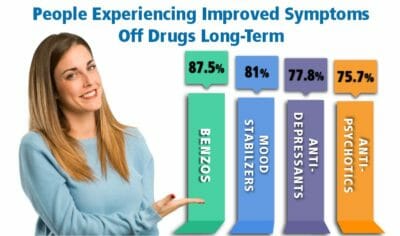Originally OxyContin© was aggressively marketed as a non-addictive pain killer, making the manufacturers a killing in sales profits. Doctors began over-prescribing OxyContin, which resulted in the opioid crisis erupting across the US, which is still plaguing the country today.
Before deciding to start or stop a drug, it is well worth finding out as much as possible about side effects and withdrawals and other important pieces of information, so a person can make the best choices for their own health.
OxyContin was a long-acting pain pill, designed to be taken every 10 to 12 hours for extended pain relief. When used recreationally, there is a high risk of overdose and death if the tablets are taken more frequently, or are crushed, chewed, or otherwise tampered with. Recreational use can include crushing and snorting the drug, dissolving and injecting it, or crushing and smoking it off tin foil. As the number of deaths from abuse began to soar, Purdue changed how the drug was manufactured; making it harder to abuse OxyContin in these ways. Unfortunately and as a result, many of those addicted began turning to heroin, a cheaper drug with similar properties.
As described in an NIMH article from 2009,
“The promotion and marketing of OxyContin was a commercial triumph,” and a “public tragedy,” when OxyContin sales had skyrocketed into the billions and the drug became the #1 drug of abuse in America, along with becoming the most lethal prescription drug in the country, resulting in thousands upon thousands of deaths.1
What was Oxycontin Used for?
OxyContin is a sustained-release form of oxycodone, the immediate-release form of the drug. Oxycodone, like hydrocodone, is a semi-synthetic derivative of opium used in the production of morphine and other opioids. Molecularly, oxycodone and hydrocodone are quite similar.10,11 Oxycodone was prescribed for the relief of moderate to severe pain. Originally, OxyContin was fraudulently marketed as a non-addictive painkiller, with a focus on relieving chronic pain of cancer patients, until the manufacturer broadened their market targets to include non-cancer-related pain.
 The Purdue pharmaceutical company which manufactured OxyContin for 20 years, has now gone bankrupt after being hit with a $6 Billion fine for its harmful product and the fraudulent marketing practices that went on for decades of enormous profits and an unprecedented wake of deaths that the drug caused over the years.2
The Purdue pharmaceutical company which manufactured OxyContin for 20 years, has now gone bankrupt after being hit with a $6 Billion fine for its harmful product and the fraudulent marketing practices that went on for decades of enormous profits and an unprecedented wake of deaths that the drug caused over the years.2
After years of opioid deaths skyrocketing, Purdue was compelled to change the molecular structure so that OxyContin was no longer able to be dissolved for injection or for snorting/inhaling. Despite these changes, the drug continued on its killing spree for the next decade, resulting in hundreds of thousands, perhaps millions of deaths in the US and around the world from unintentional opioid poisoning.
Currently, there are either patents or pending applications for patents on generic continuous release oxycodone formulations from other pharmaceutical companies, such as TEVA, which produced a 2-week clinical trial on a cohort of 155 patients, in its application and claims their products to be tamper-proof. It seems the drug regulators don’t really want the opioid nightmare to end.13
In 2018, the CDC published a new guide for prescribing opioid drugs in what can only be described as damage control, giving more clear guidelines to physicians prescribing drugs like OxyContin©, oxycodone, hydrocodone, codeine, morphine, or other opioid-based medications.3,12
OxyContin Alternative Names and Slang
Through diversion, OxyContin rapidly became a popularized street drug with many slang names, such as:
- Oxy
- OCs
- Hillbilly heroin
- Rich man’s heroin
- Killer
- Kickers
OxyContin Side Effects
OxyContin produces an exhilarating euphoric effect, along with the following less pleasant side effects:
- Slowed respiration, difficulty breathing
- Weakness
- Weak pulse, slowed circulation
- Inability to feel pain, numbness
- Nausea, vomiting
- Stomach pain, abdominal cramps
- Constipation
- Appetite loss
- Headache
- Itching, rash
- Dizziness, lightheaded feeling
- Low blood pressure
- Dry mouth
- Profuse sweating
Discontinuing/Quitting OxyContin, Info on OxyContin Withdrawal
The half-life of continuous release oxycodone as in OxyContin is approximately four to six hours. Several different phases of withdrawals are identified for treatment in a clinical setting:
Acute withdrawal: Abruptly stopping an opiate such as OxyContin produces the set of withdrawals discussed earlier in the “Withdrawal Symptoms” section. Acute withdrawal is generally referred to as simply “withdrawal” and can be mitigated by bridge medications such as methadone or Suboxone, or in the case of newborn infants born to opioid-dependent mothers, morphine can be used to dampen the severity of discomfort. Acute withdrawal is considered a condition needing immediate clinical assistance, beginning around 8 to 12 hours after the last dose, or considerably sooner if the drug was crushed and snorted or injected, and lasting anywhere from 4 to 21 days or longer.6
Protracted withdrawal: After acute withdrawal, protracted withdrawal describes the symptoms similar to those experienced in acute withdrawal but lasting for a longer period of time, i.e., more than 21 days. Because of the adaptive changes in the CNS from opiate use, these symptoms can persist for weeks or months after abstinence from opioids. In addition to physical symptoms, psychological symptoms such as depression, anxiety, emotional blunting, dysphoria, problems making decisions, etc., can persist for months without support or treatment.7
Extinction phase: Following protracted withdrawal, the next phase of withdrawal is called the extinction phase which can last months or longer. In the extinction phase, the abstinent user will experience cravings, “out of the blue,” or concurrent with triggers or “cues” in the environment.
Withdrawal “aftershocks” may come out of the blue and may be mild, moderate, or intense. If ignored, this phenomenon can lead to relapse. Relapse prevention training is one method to prepare in advance so this phenomenon does not unduly surprise a person attempting successful abstinence.8
A wealth of pragmatic information exists that can help in managing all of the above phases of opioid withdrawal. It is possible to gain a deeper understanding of how to assist the body to transition back to normalcy after the alterations and adaptations of addiction. Repairing neurochemistry can be greatly assisted using targeted nutrition from the diet as well as supplementation which can provide the nutritive precursors that may accelerate the repair of natural chemistry in the body. Lifestyle changes may also play a significant role in managing sustainable sobriety. Alternative to Meds Center offers a wide range of educational and other resources in this area to assist clients seeking success in recovery.

 The Purdue pharmaceutical company which manufactured OxyContin for 20 years, has now gone bankrupt after being hit with a $6 Billion fine for its harmful product and the fraudulent marketing practices that went on for decades of enormous profits and an unprecedented wake of deaths that the drug caused over the years.2
The Purdue pharmaceutical company which manufactured OxyContin for 20 years, has now gone bankrupt after being hit with a $6 Billion fine for its harmful product and the fraudulent marketing practices that went on for decades of enormous profits and an unprecedented wake of deaths that the drug caused over the years.2 However, during OxyContin withdrawal, these receptors are also left bereft of natural pain-killing chemicals, though also broadcasting a high volume of pain signals throughout the entire central nervous system, and no defense is immediately available. This is one reason why quitting a drug such as OxyContin is so uncomfortable, and why the withdrawals can be so excruciatingly painful. The Alternative to Meds Center opiate withdrawal protocols addresses these challenges to make the process much easier to withstand and to complete without undue suffering.
However, during OxyContin withdrawal, these receptors are also left bereft of natural pain-killing chemicals, though also broadcasting a high volume of pain signals throughout the entire central nervous system, and no defense is immediately available. This is one reason why quitting a drug such as OxyContin is so uncomfortable, and why the withdrawals can be so excruciatingly painful. The Alternative to Meds Center opiate withdrawal protocols addresses these challenges to make the process much easier to withstand and to complete without undue suffering. 







